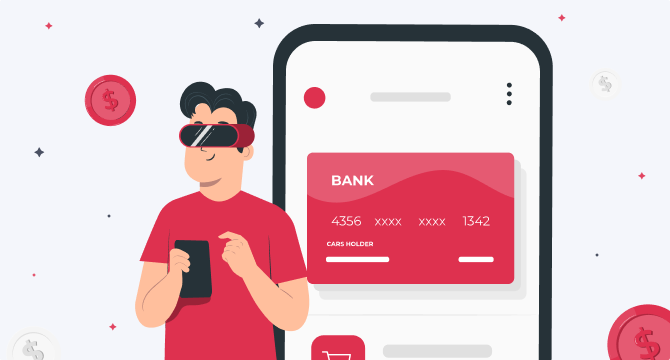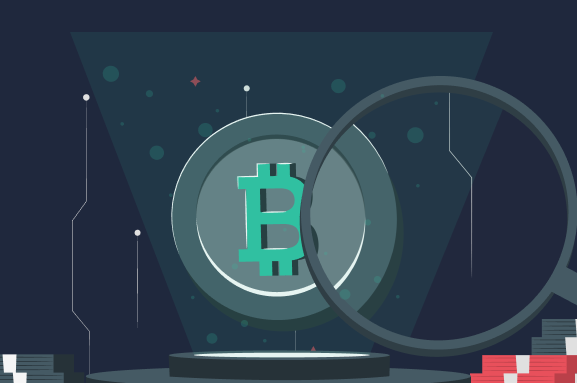Let’s talk
- Your message has been sent!
Apr 14, 2023 / Updated:Jun 15, 2023
Financial Institutions in the Metaverse
The metaverse has captured the attention of banks and financial institutions as they are looking for new ways to connect with customers. Enabled by blockchain, decentralized internet, and other advanced technologies, the metaverse offers users immersive experiences where they can interact through 3D avatars, create, own, and monetize content, take part in governance, and more.
Rising interest drives the growth of metaverse development, and banks are actively exploring emerging technologies to modernize their infrastructure. Let’s zoom into metaverse banking to see how it transforms the financial industry.

What Opportunities Does the Metaverse Unlock for Banks and Customers?
The metaverse significantly impacts the banking sector by presenting limitless opportunities for consumers and brands. Let’s go over some of the possibilities that the metaverse unlocks.
Enabling activities in a 3D world
The 3D network, consisting of avatars, spaces, and digital products, pushes the limits of virtual interaction. Here advanced technologies such as AR, VR, and blockchain come together to allow users to connect seamlessly through real and virtual worlds. People interact through avatars that represent digital personas, and digital identities store related information. This way, realistic and immersive experiences come to replace 2D mobile or online banking.
Ownership powered by blockchain and NFTs
Ownership is the key concept of the metaverse. Powered by blockchain, the decentralized virtual world provides transparency, where users can see data and control their virtual property. Individuals can create avatars and other digital content, and businesses can create virtual versions of their products existing in the real world. In the metaverse, ownership is protected due to non-fungible tokens (NFTs). They are unique tokens that store data verifying who the owner is. NFTs act as certificates of ownership existing in the blockchain.
Providing personalized customer experience
The metaverse allows banks and financial institutions to solve real-life customer support problems and provide services tailored to their needs. Banks can create virtual rooms in the metaverse for different services, such as trading or investment. In addition, they can use the virtual space for marketing purposes to attract new customers. The metaverse expands accessibility by enabling users to reach products and goods across various devices easily.
Cross-platform communications
The metaverse is a large concept that combines various context-based virtual spaces. Users can choose platforms for education, collaboration, trading, and other activities. Similar to the real world, in the metaverse, we can move and go from one place to another. The great thing is that these platforms are interoperable. For example, a customer of a bank in the metaverse can take a loan, move their funds to another channel, and buy a house or other digital property.

What Currency Will Be Used in the Metaverse?
Different blockchain-based metaverse platforms allow users to shop, buy tickets for various events, acquire land, and more. But how payments in the metaverse are made? Platforms, such as Sandbox or Decentraland, have their native cryptocurrencies for transactions. Most likely, metaverse tokens will continue to be used in virtual worlds, but there will be one cryptocurrency accepted for payments in all of them. For example, it can be a stablecoin such as USDC or USDT.
Currently, among the most popular cryptocurrencies in the metaverse are:
- Ether: Most metaverse platforms are built on the Ethereum blockchain. People use Ethereum’s native cryptocurrency, Ether, to create NFTs and host decentralized applications. Also, Ether can be used for direct transactions on the platforms.
- MANA: It is the native token of the Ethereum-based 3D virtual world Decentraland, which allows users to buy land, and avatars, showcase their NFTs, play games, and more. Users make payments in the space with MANA. In addition, MANA allows token holders to vote for decisions and take part in the platform’s governance.
- SAND: This is the cryptocurrency of another popular metaverse platform called Sandbox. Like Decentraland, Sandbox is based on Ethereum and offers users immersive 3D experiences. The SAND token powers activities in the ecosystem, being used for payments and governance.

ATMs, Banks, and DeFi in the Metaverse
Metaverse finance presents an ecosystem consisting of traditional finance institutions, decentralized trading, and ATMs. Just like in real life, you can go to a digital ATM in the metaverse and withdraw money from your account. The world’s first metaverse ATMwas installed in Decentraland to allow users to convert their fiat money from credit cards to MANA quickly and make transactions in the virtual space. As financial activities are moving to the metaverse, banking in the metaverse is expanding, with institutions like JPMorgan, HSBC, and SCB (Siam Commercial Bank) officially joining the space.
Decentralized finance solutions play an essential role in the metaverse. Yield farming, NFT lending, borrowing, and other solutions can unlock value in the space by providing transparency and efficiency. Users can own land, avatars, and other assets and trade goods with each other without any limitations. Here, smart contracts, the self-executive programs built on blockchain, automate processes and power decentralized applications.

Is Metaverse the Future of Banking?
Wall Street banks bet big on the metaverse. According to the analysts at Goldman Sachs, in the next two decades, the metaverse may evolve into an $8 trillion market.
Amid the shift towards a virtual world, a growing number of banks are exploring the potential of emerging technologies to be a part of the transformation and not fall behind.
The metaverse is still in its early stage of development, but the dynamic pace of growth and rising interest promise that it will be a large part of banking in the future.
It’s time for you to join the metaverse.
Start building in the metaverse now to create new experiences and unlock revenue opportunities. Let's talk about your idea, and see how we can help bring it into reality.

Articles
-
 What Are Decentralized Exchanges? Meaning, Examples, and Benefits
What Are Decentralized Exchanges? Meaning, Examples, and Benefits
DEXes (short for decentralized exchanges) are places to trade cryptocurrencies, and they …
Jul 13, 2023
-
 How Are NFTs Transforming DeFi
How Are NFTs Transforming DeFi
Say "blockchain and crypto," and Ethereum, NFTs, DeFi, and tokens will surely …
Jul 12, 2023
-
 What Is Blockchain Technology?
What Is Blockchain Technology?
While exploring emerging technologies and learning about recent tech news, you will …
Apr 20, 2023
